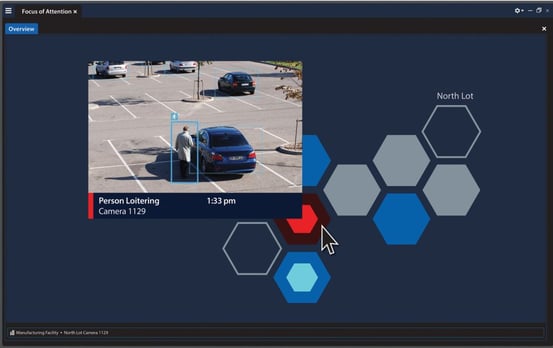
Video surveillance systems are improving all the time. Camera technology has evolved to capture high-definition footage, even in less-than-ideal environments. There are now security cameras that can capture footage in 4K Ultra HD, as well as night vision cameras with infrared LEDs for capturing footage in ultra-low light conditions.
Aside from advancements in hardware, security providers have also developed analytics technology to process captured footage in real-time. Video analytics maximizes the use of surveillance systems through advanced monitoring capabilities, turning video surveillance into an even more powerful security tool.
What is video analytics?
Video analytics monitors footage to search for suspicious activities and send out alerts. Unlike having a person watch the live feed of surveillance footage to detect unusual activity, video analytics software does it autonomously, with no need for manual input.
Video analytics is capable of detecting and tracking objects, which it can then categorize into people, objects, or vehicles. Some of the most common applications of video analytics include:
Similar Feature Search: This system finds all recorded instances of a person or a vehicle on the footage by entering a specific physical description (age, gender, etc.), uploading a reference photo, or looking for an example within the footage. It uses face analytics to enhance the search, using facial features to detect appearances, even if items such as clothing change over time.
License Plate Recognition: This feature automatically reads license plate information from vehicles, enabling security operators to quickly find appearances of the vehicle on recorded video.
Motion Detection: This feature sends out an alert when motion is detected, such as any activity after hours, or a person entering a restricted zone.
Object Detection and Recognition: This is used to determine the presence of an object and its classification, which can be used to monitor for theft (when an object is removed), unattended baggage (when an object is left unattended), and a variety of other uses.
Traffic Monitoring: This monitors road and foot traffic, including the speed and direction of movement, to check for vehicles of concern.
Crowd Monitoring: This monitors the movement of people within indoor and outdoor environments, monitoring for unusual activities and even estimating occupancy levels.
How does video analytics work?
Video analytics can be installed in the security cameras themselves, in an NVR, or applied as a third-party solution, such as the Avigilon Control Center.
There are two main algorithms that are used for video analytics:
- Fixed algorithm analytics looks for specific behaviors. This requires security operators to set up specific search criteria for the software to look for, such as the following:
- a person entering or leaving a defined detection zone
- an object being placed in the scene and then left behind
- a person going in a specific direction
- Self-learning algorithms (i.e. artificial intelligence) learn normal behavior and detect unusual activities, without the need for predefined things to search for. They learn what the typical activity is like during the day, during rush hour, during weekends, etc., then issue alerts for unexpected behavior or anything out of the ordinary, such as detecting motion after hours.
Over time, self-learning video analytics optimizes its detection capabilities to increase its accuracy and lower false-alarm rates, based on the feedback that it gets from users on which alarms are real and which are false.
How can video analytics benefit your business?
Video analytics can help your organization in three main ways:
- It augments the capabilities of video surveillance systems by providing reliable monitoring and new detection capabilities. This allows for better security coverage and quicker response times since it’s able to detect and send out alarms as the alarm event unfolds, giving response teams more time to react.
- It allows video surveillance systems to integrate with other systems such as access control, fire life-safety (by identifying when there’s smoke and fire), and active shooter detection systems. This increases operational efficiency by streamlining and automating processes, all without the need for human intervention.
- It reduces staff requirements and lessens the risk of human error. It can be challenging for security personnel to watch live feeds all day since humans can be prone to distraction and lack of focus. Video analytics offers reliable monitoring capabilities that leave security personnel free to perform tasks that are more productive. Additionally, video analytics provides security staff with better access and management control over recorded video, allowing them to pinpoint exact scenes without having to sift through hours of footage.
If you would like to know about what video analytics can do for your business, you can contact our team at salessupport@abscosolutions.com. You can also join our joint webinar with Avigilon regarding their video management software, the Avigilon Control Center. You can sign up here to register for the event to be held on September 23, 2021.

